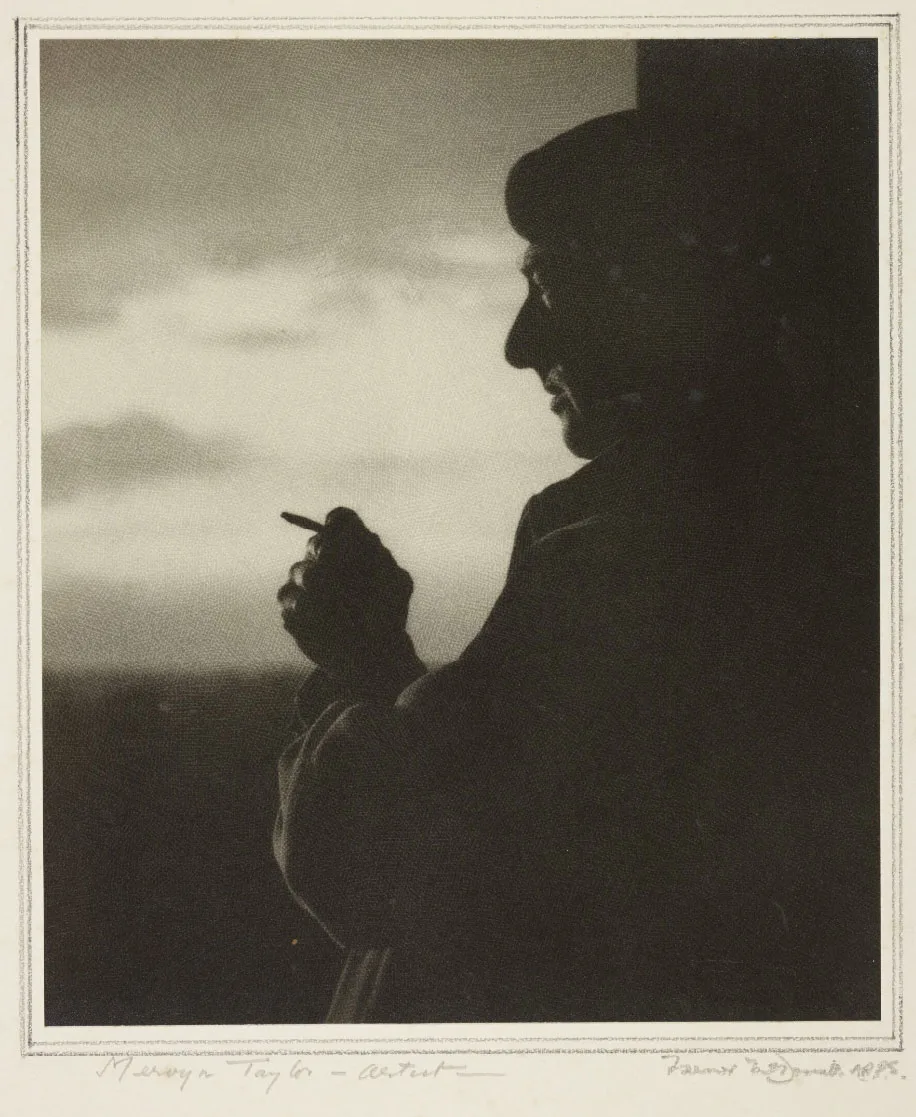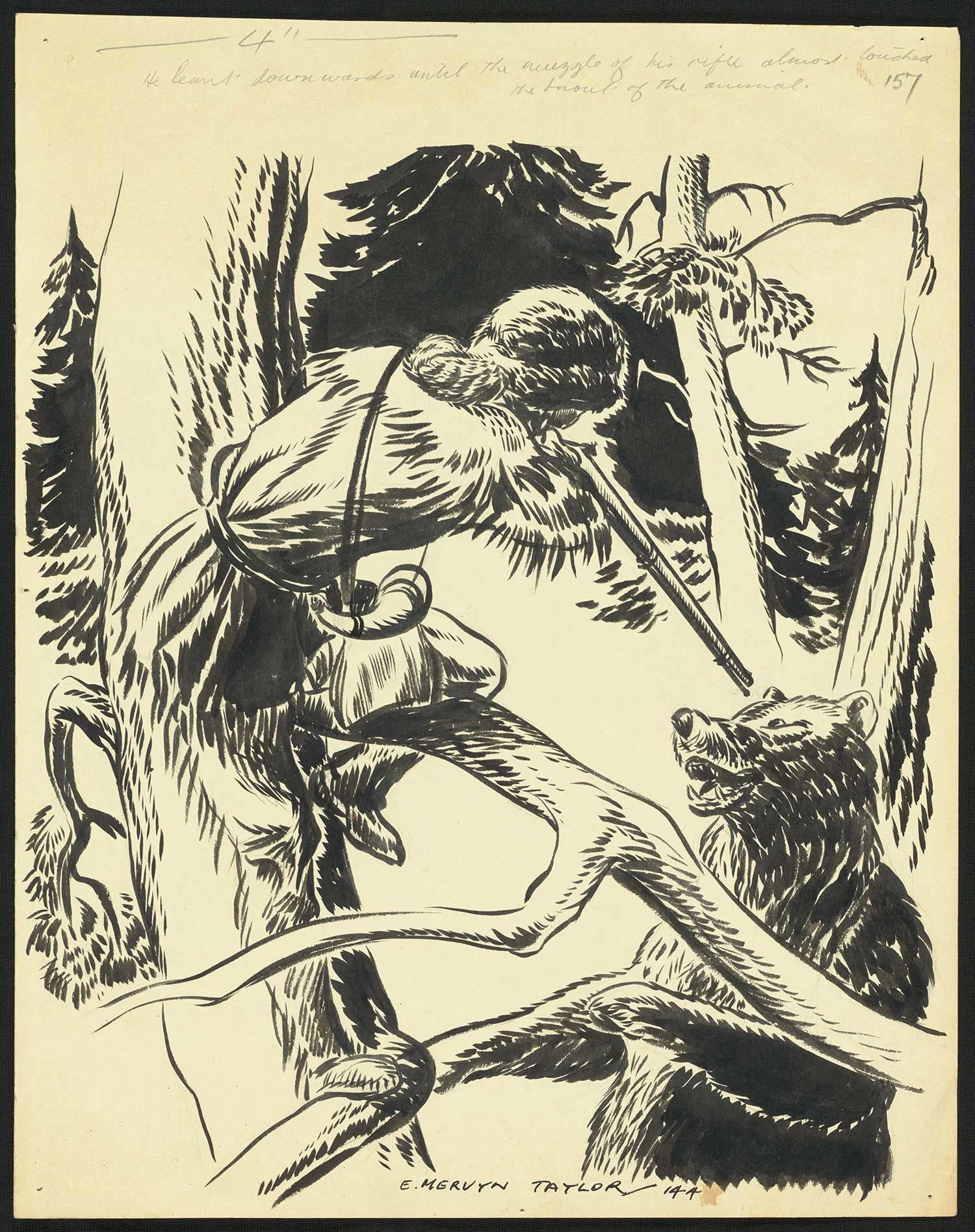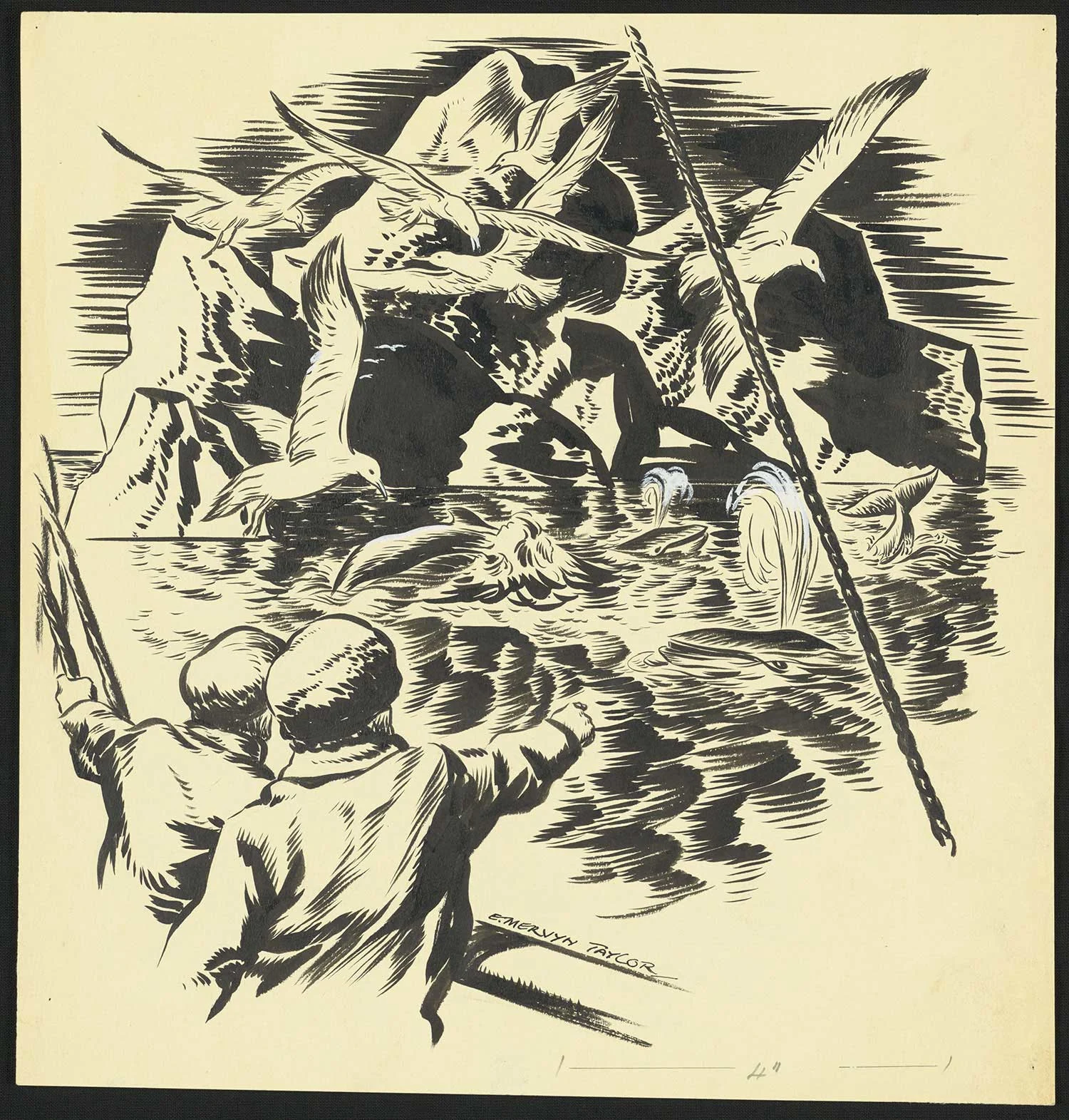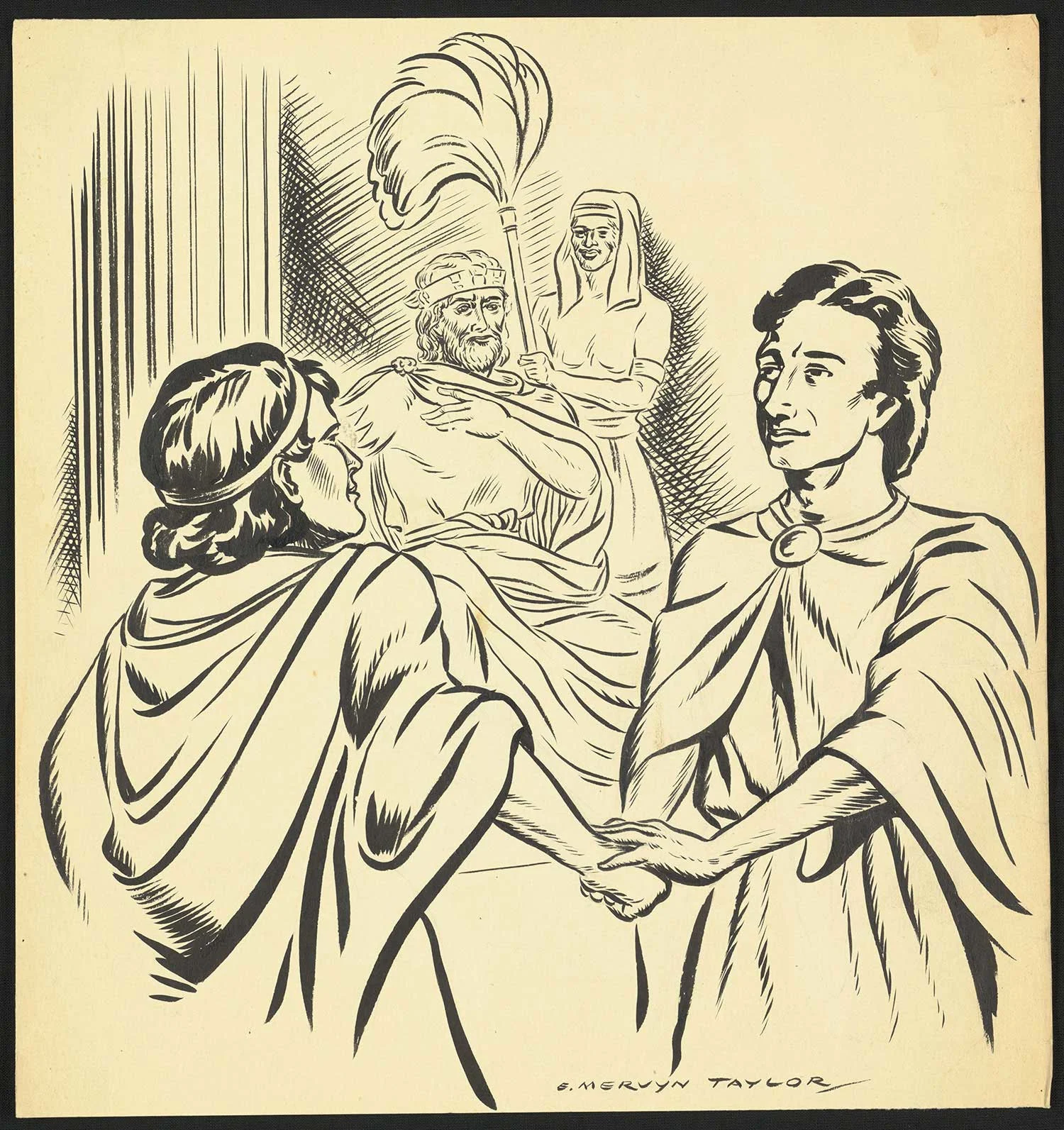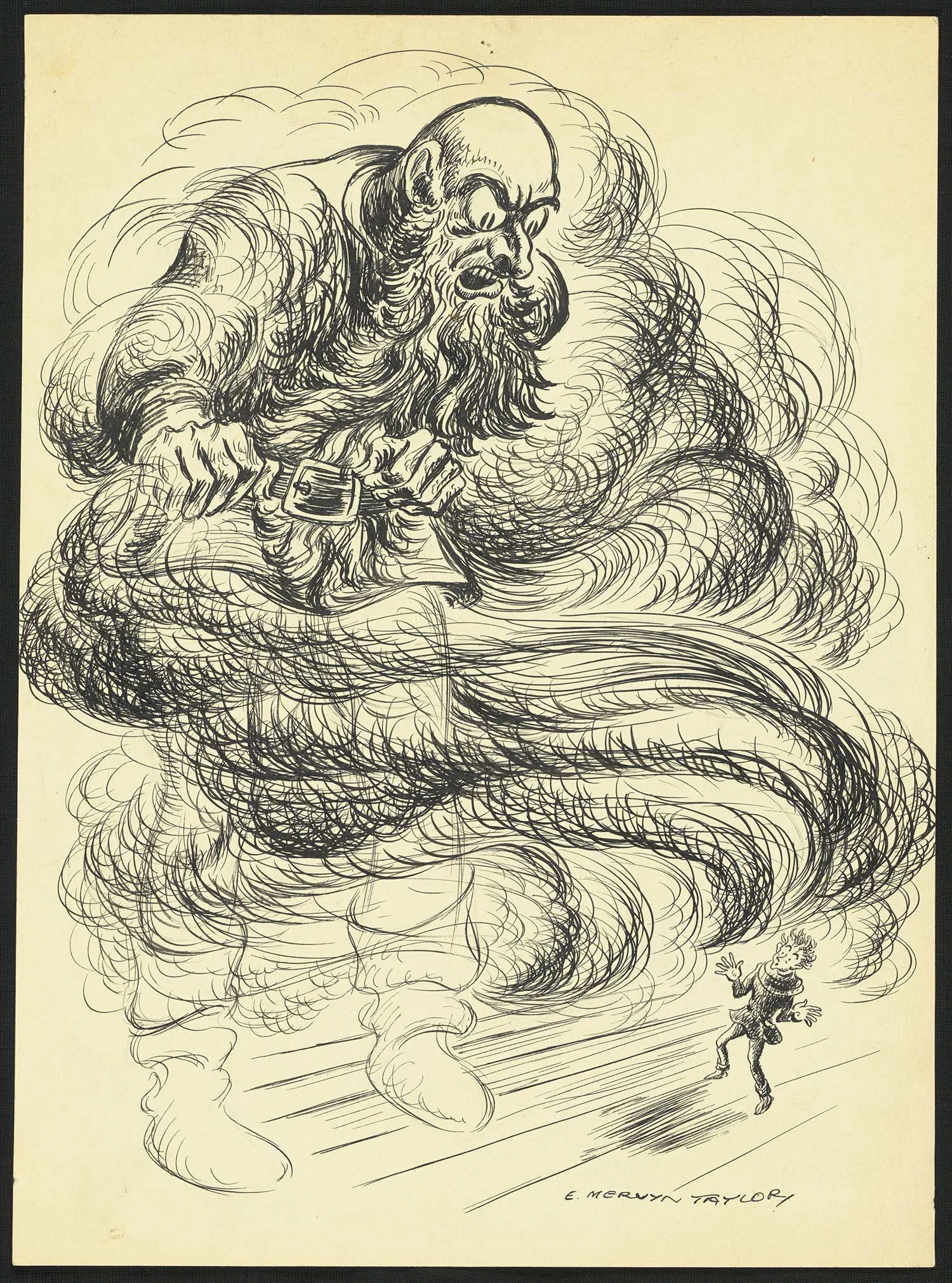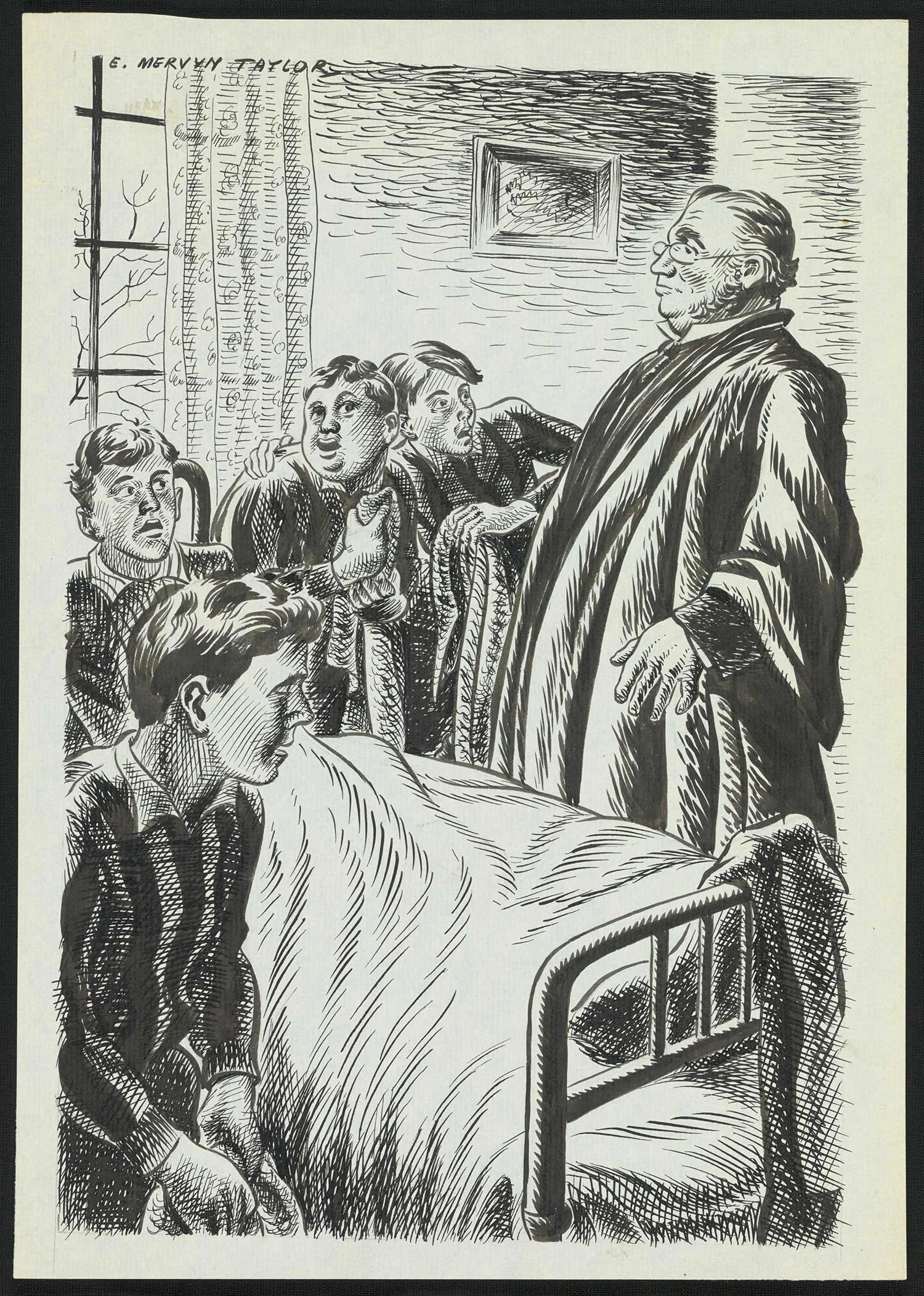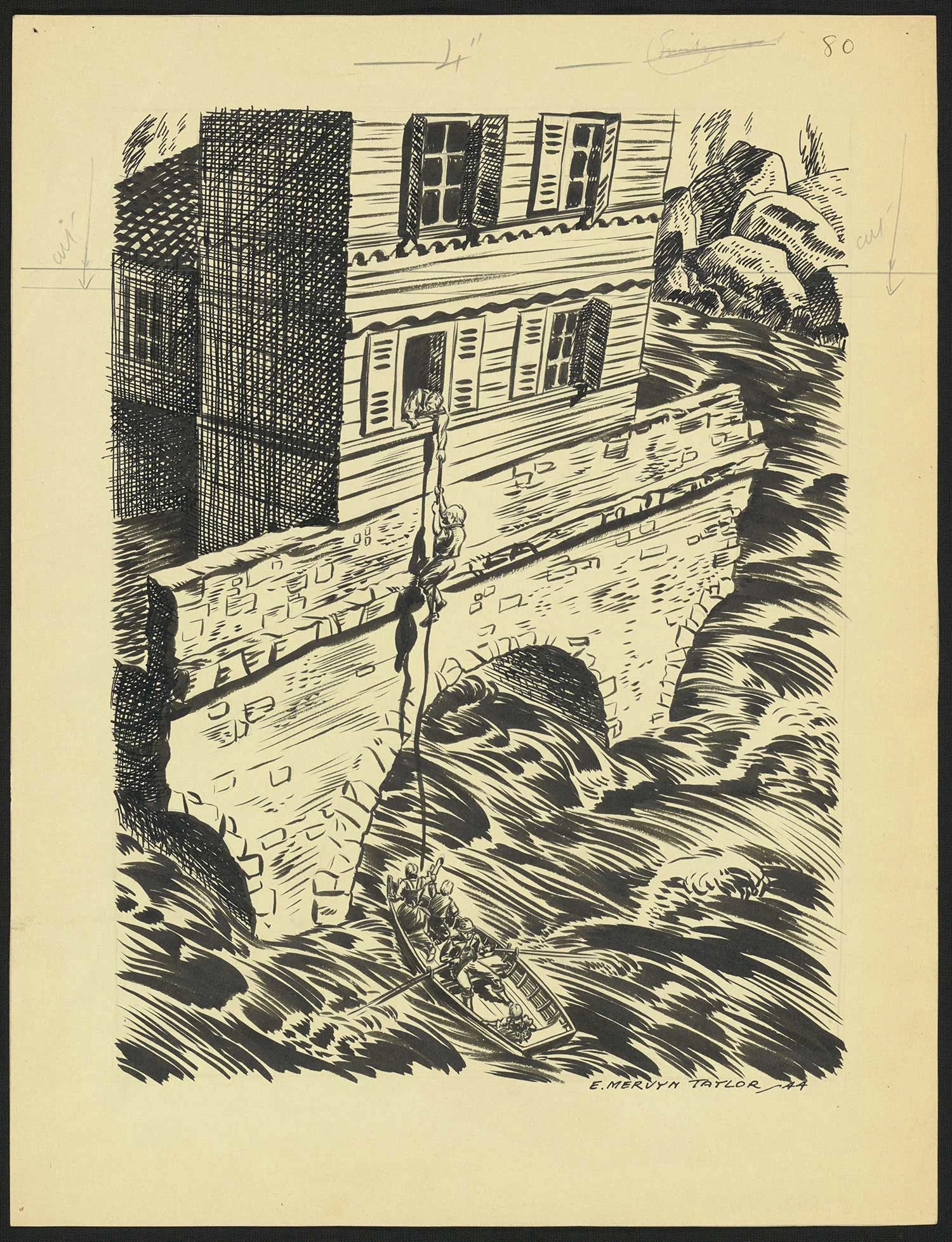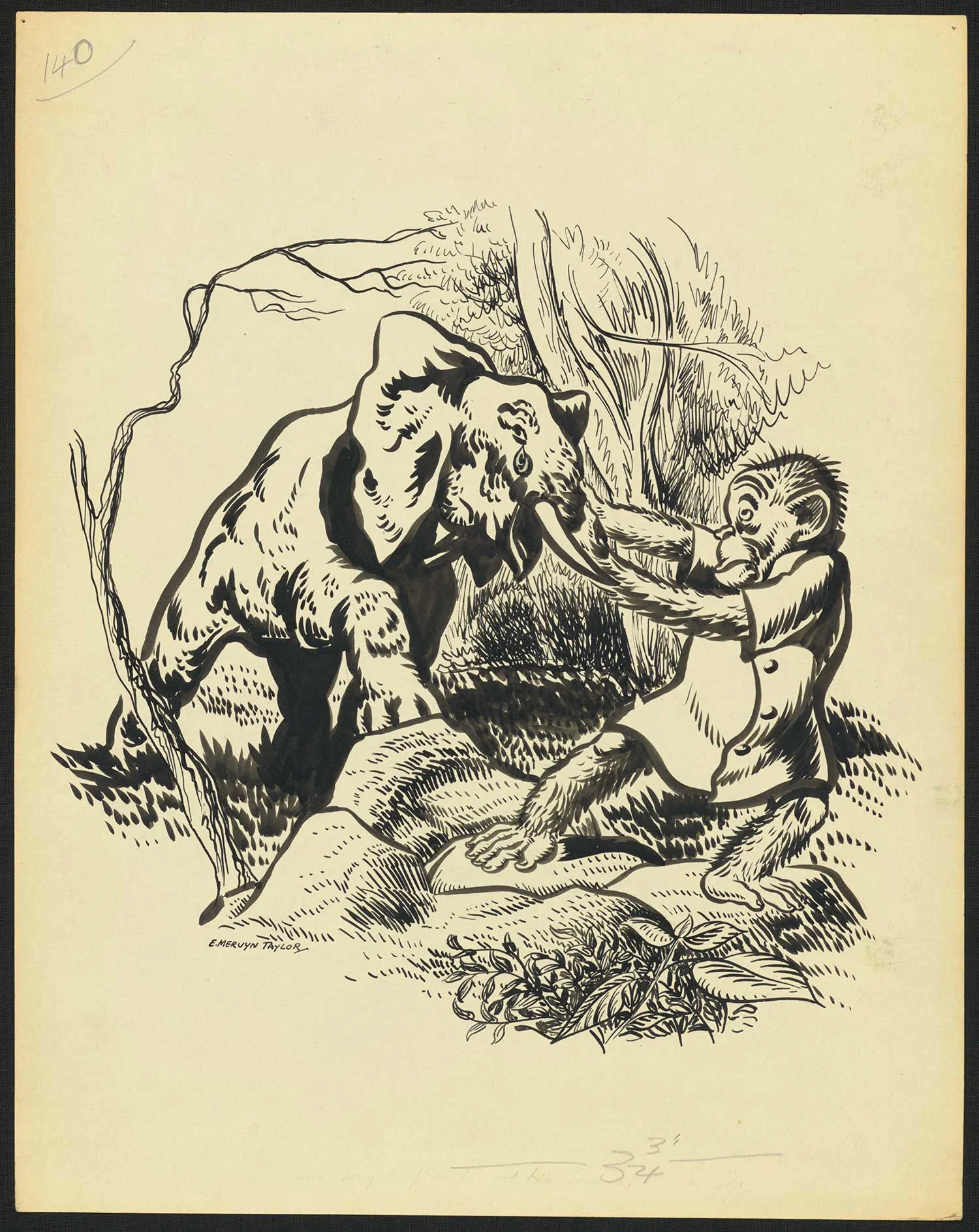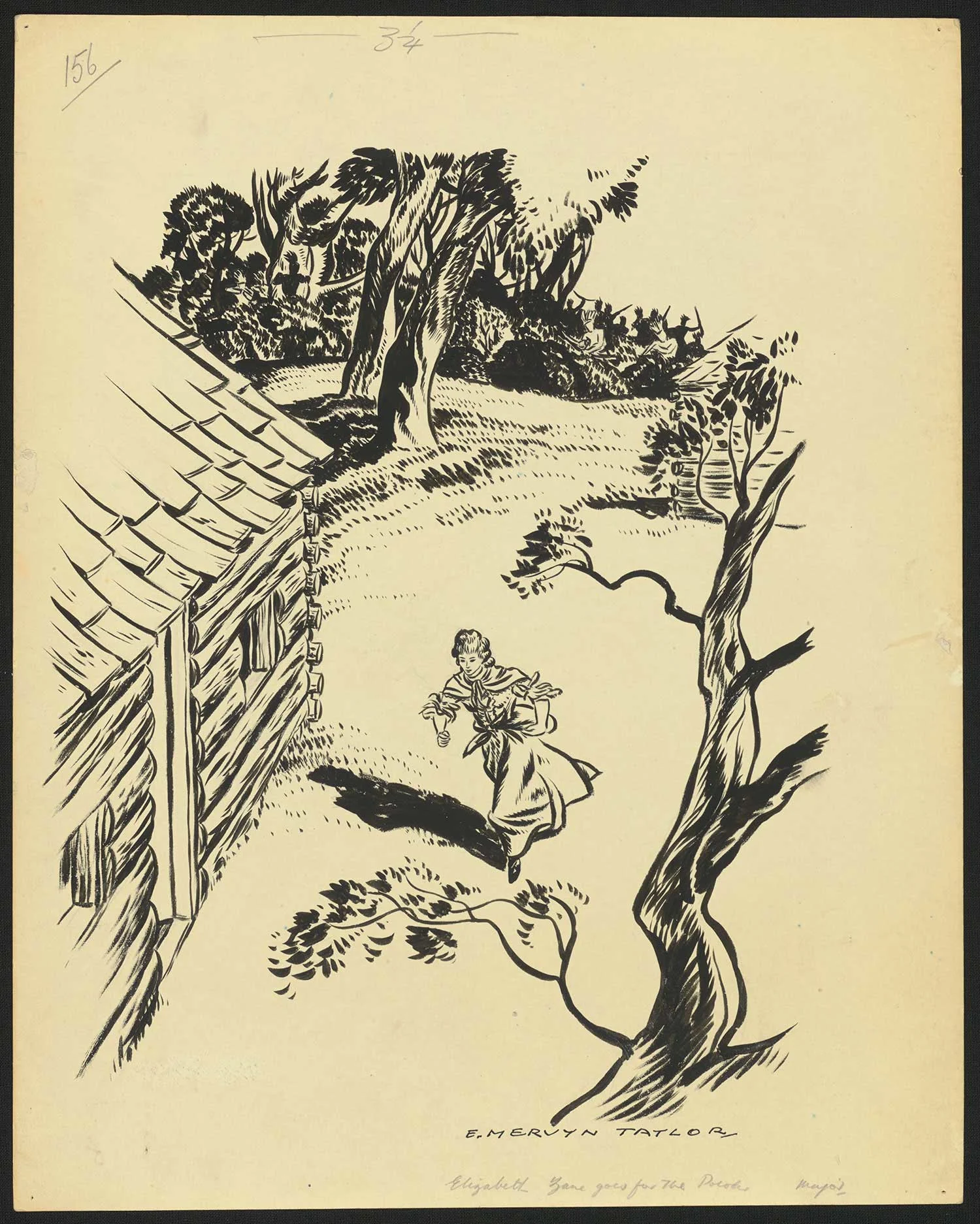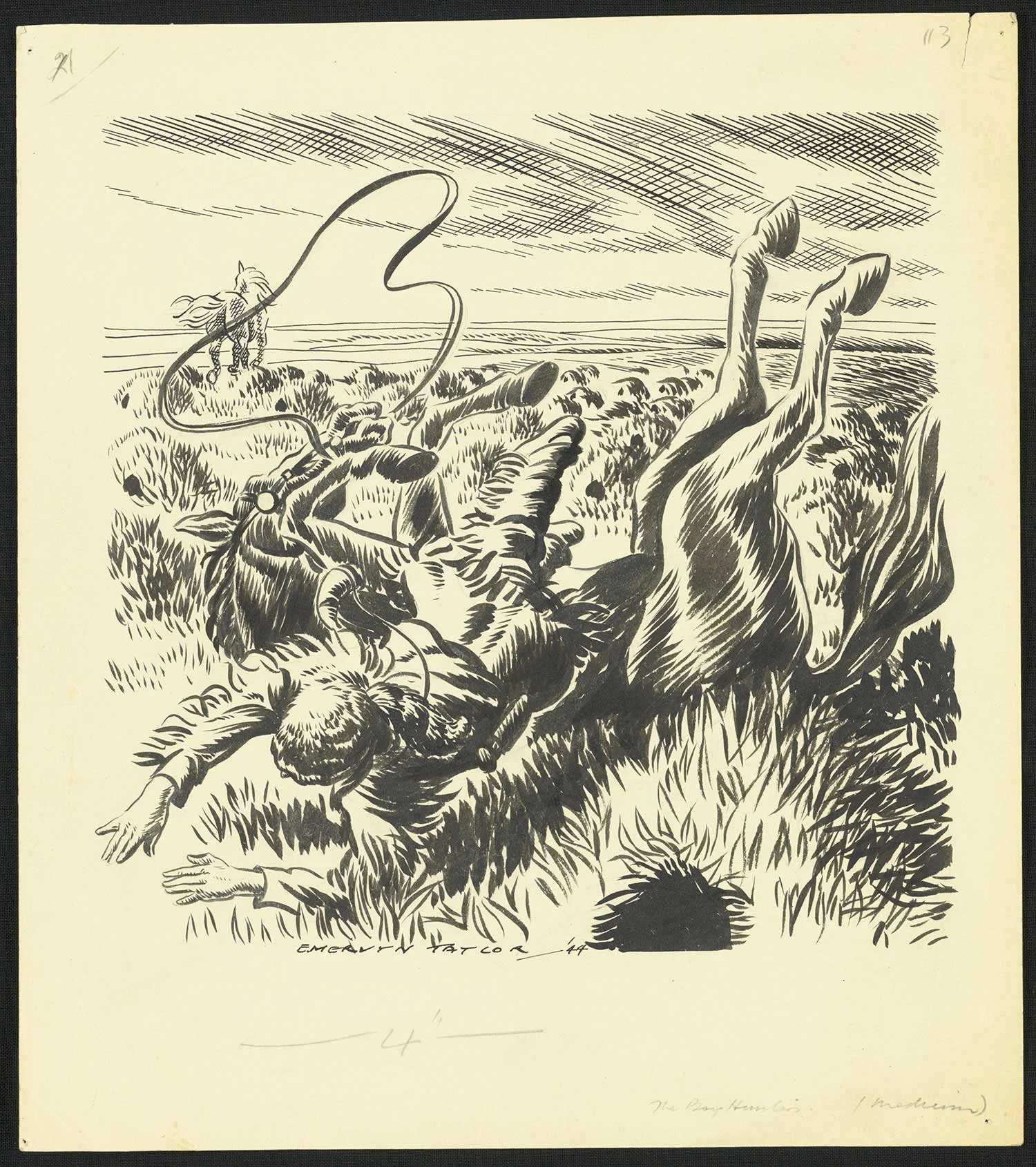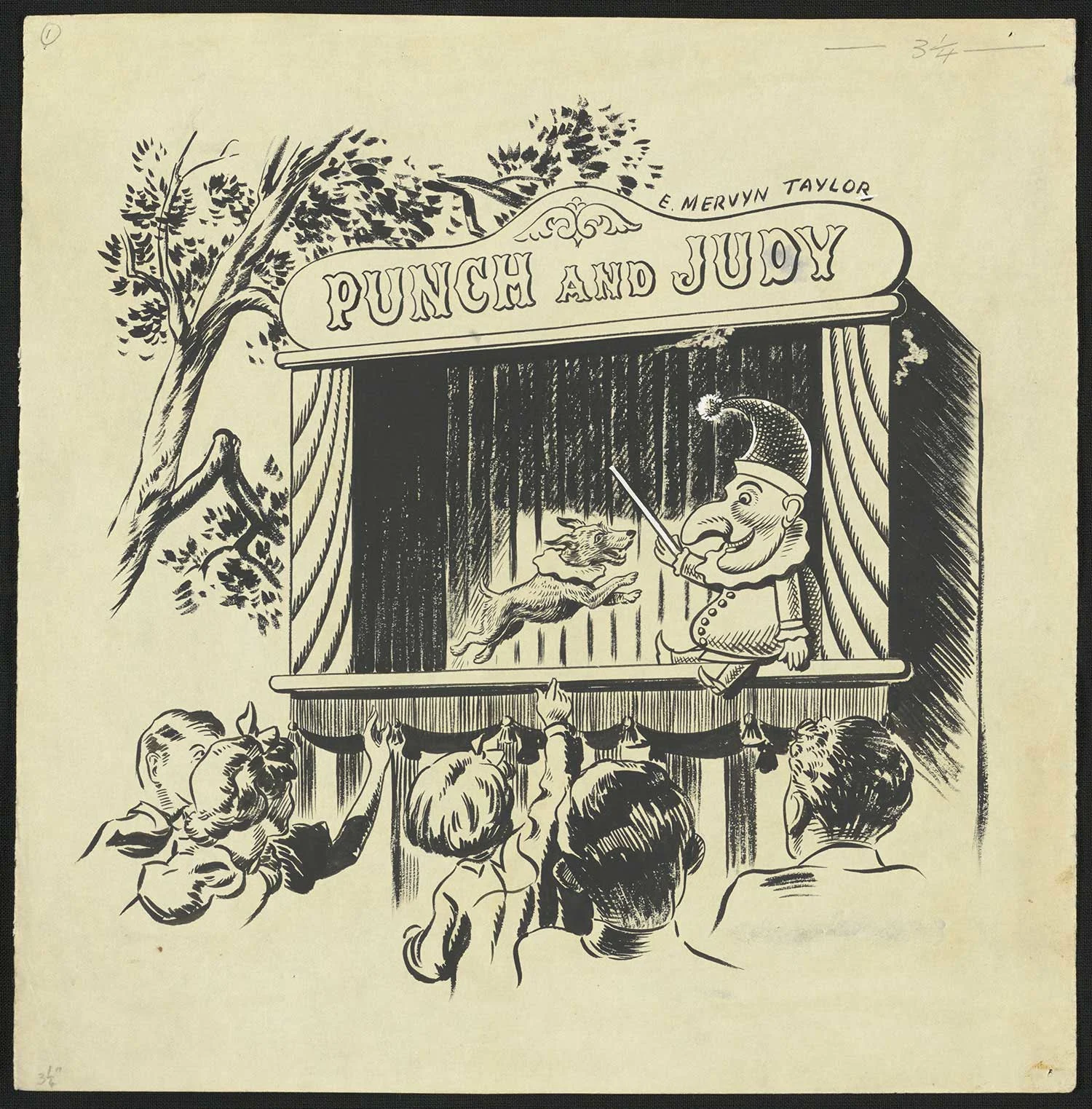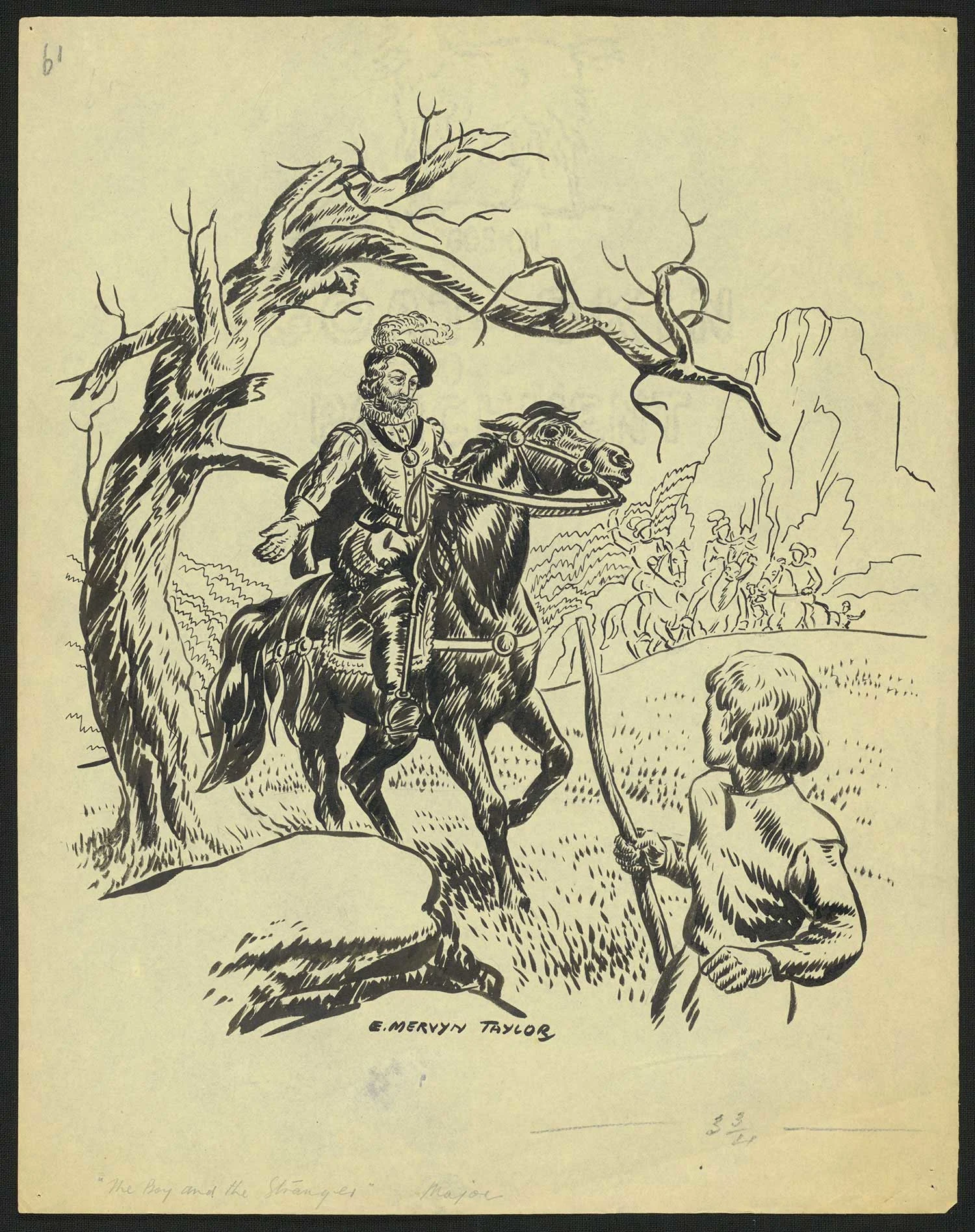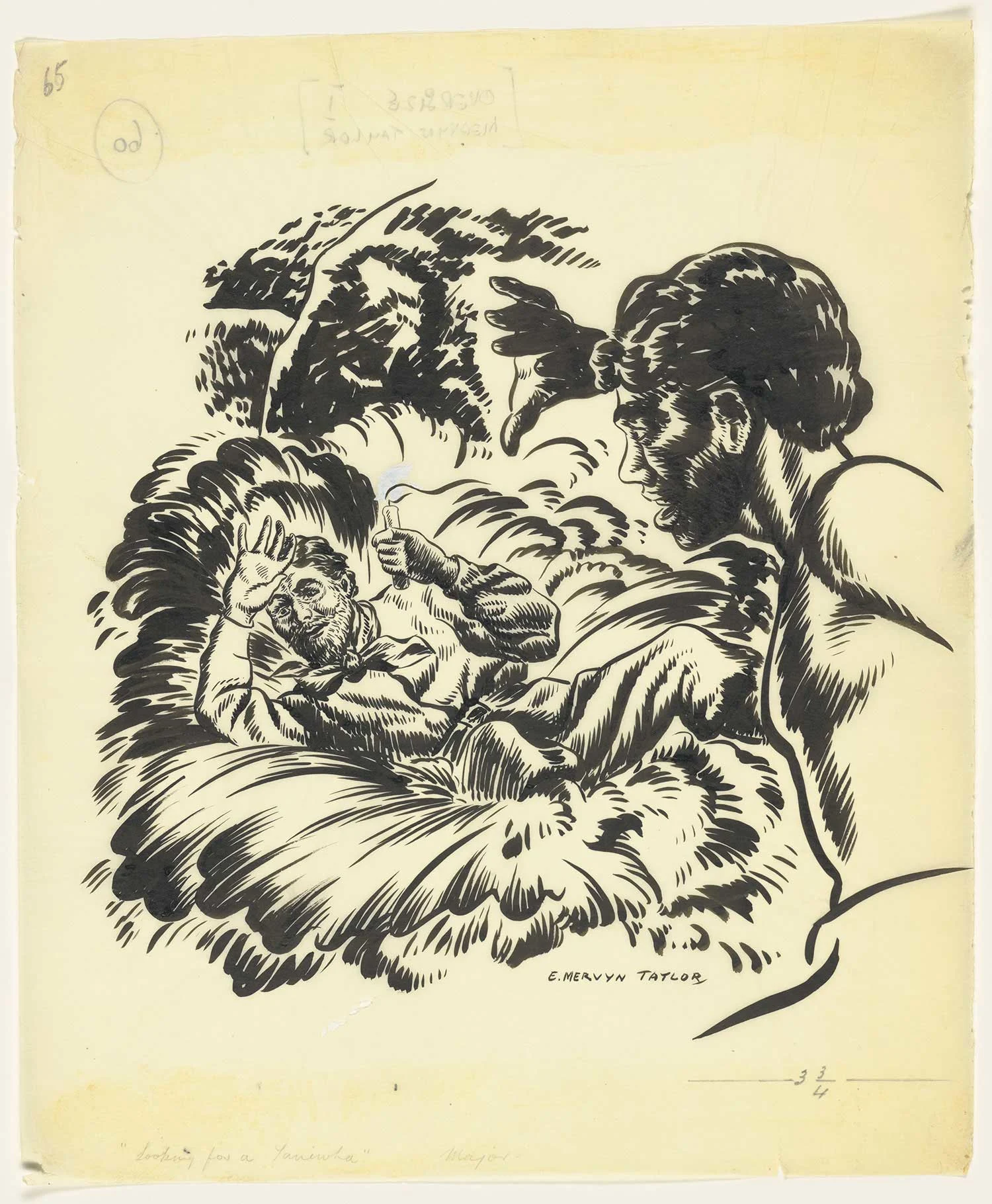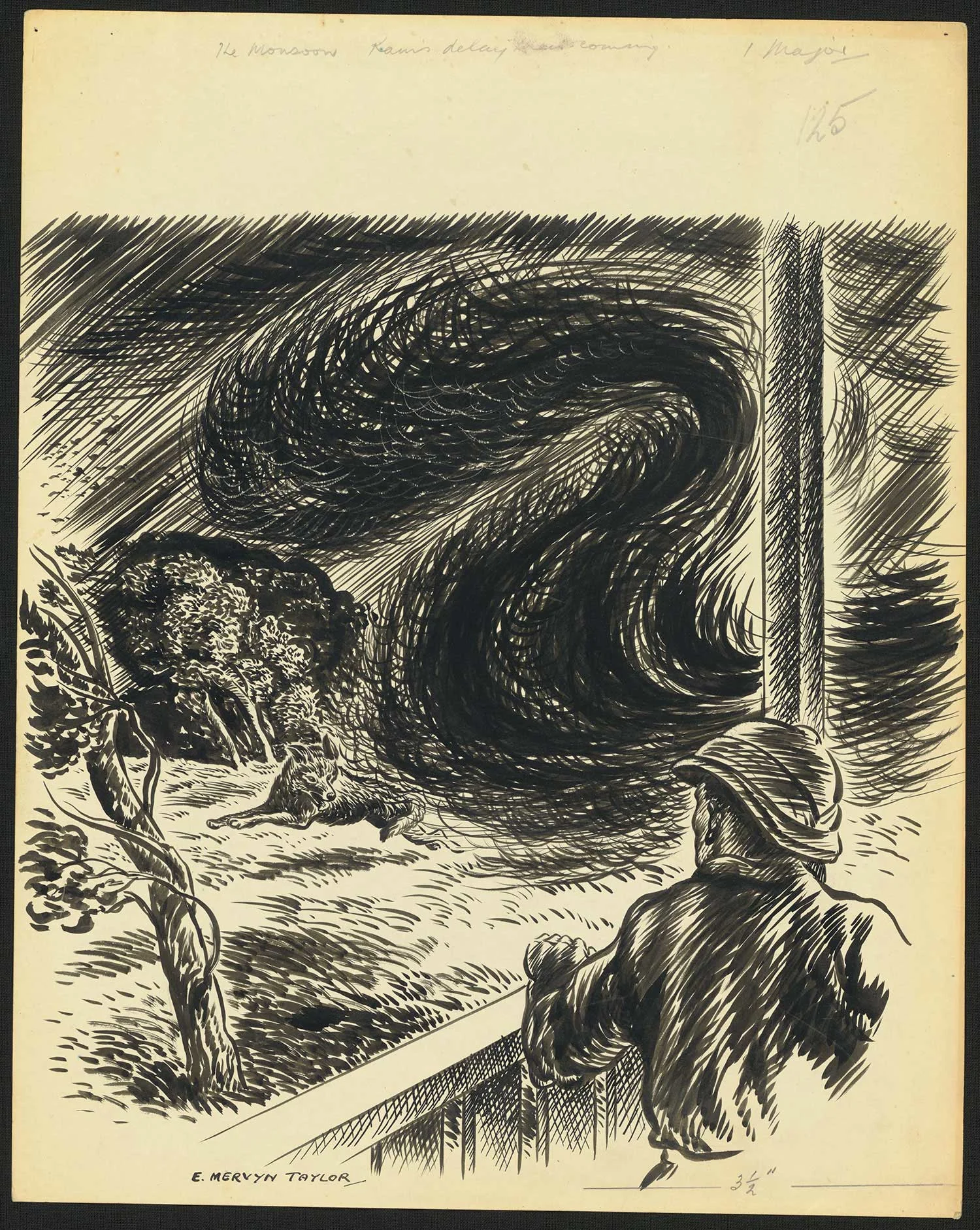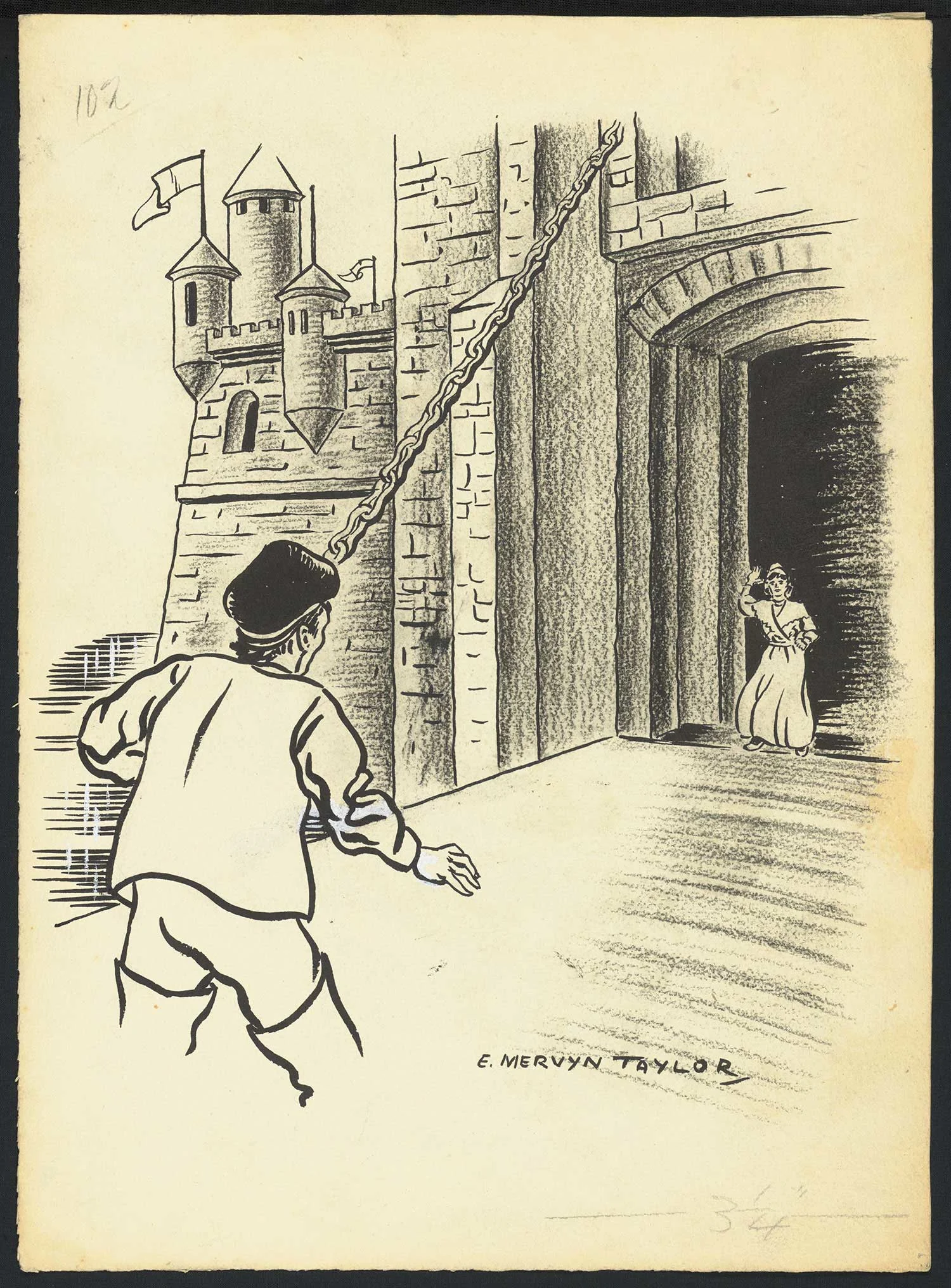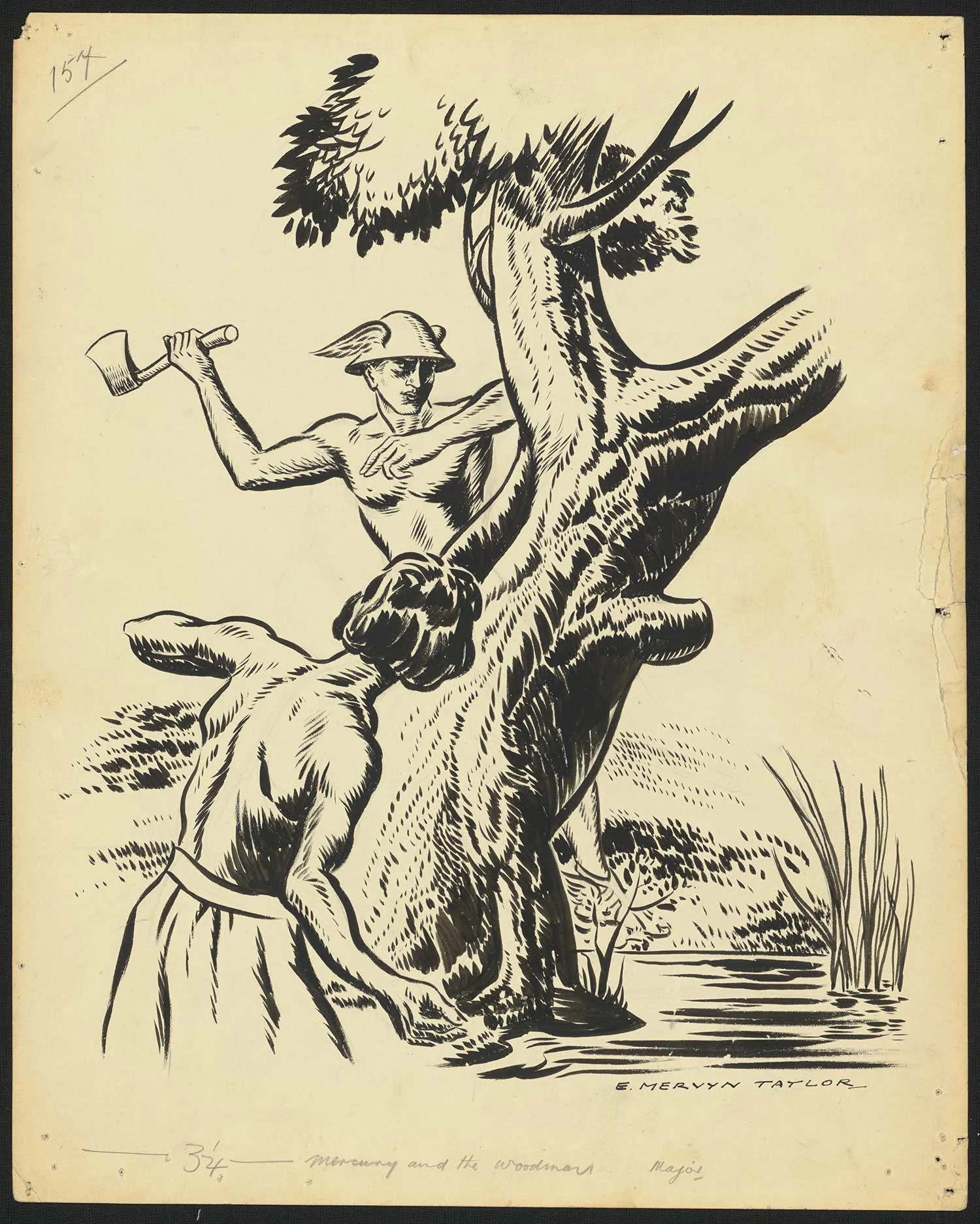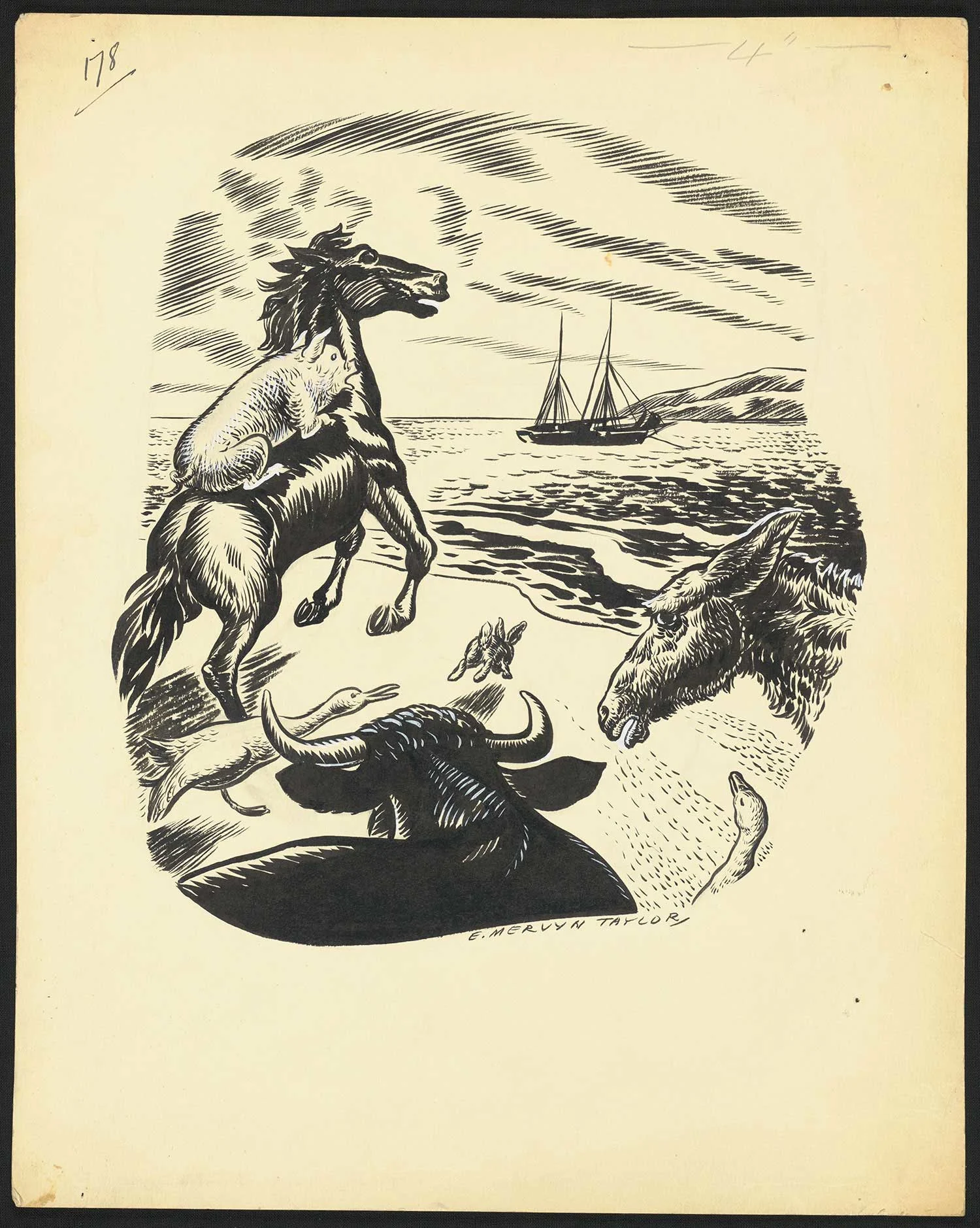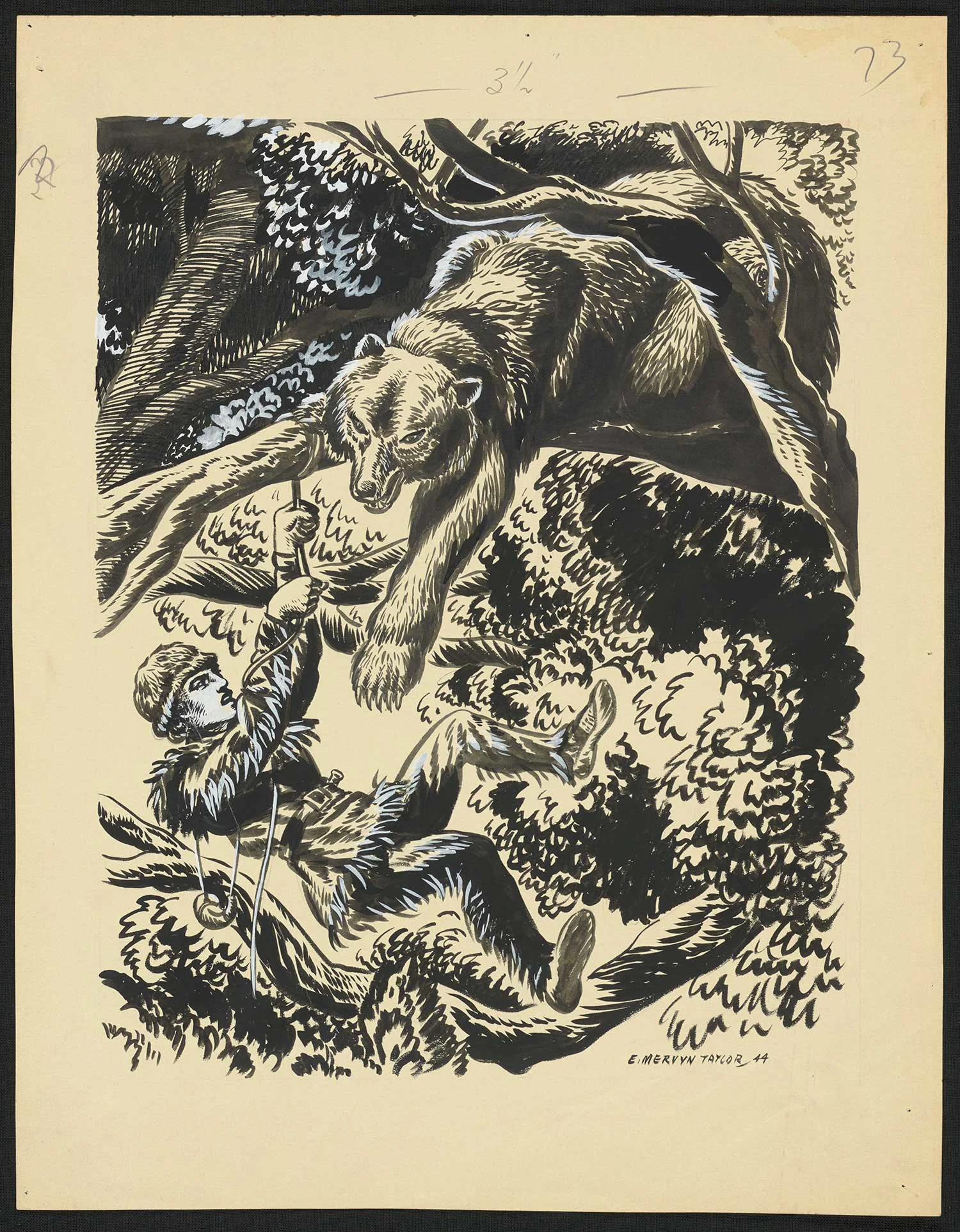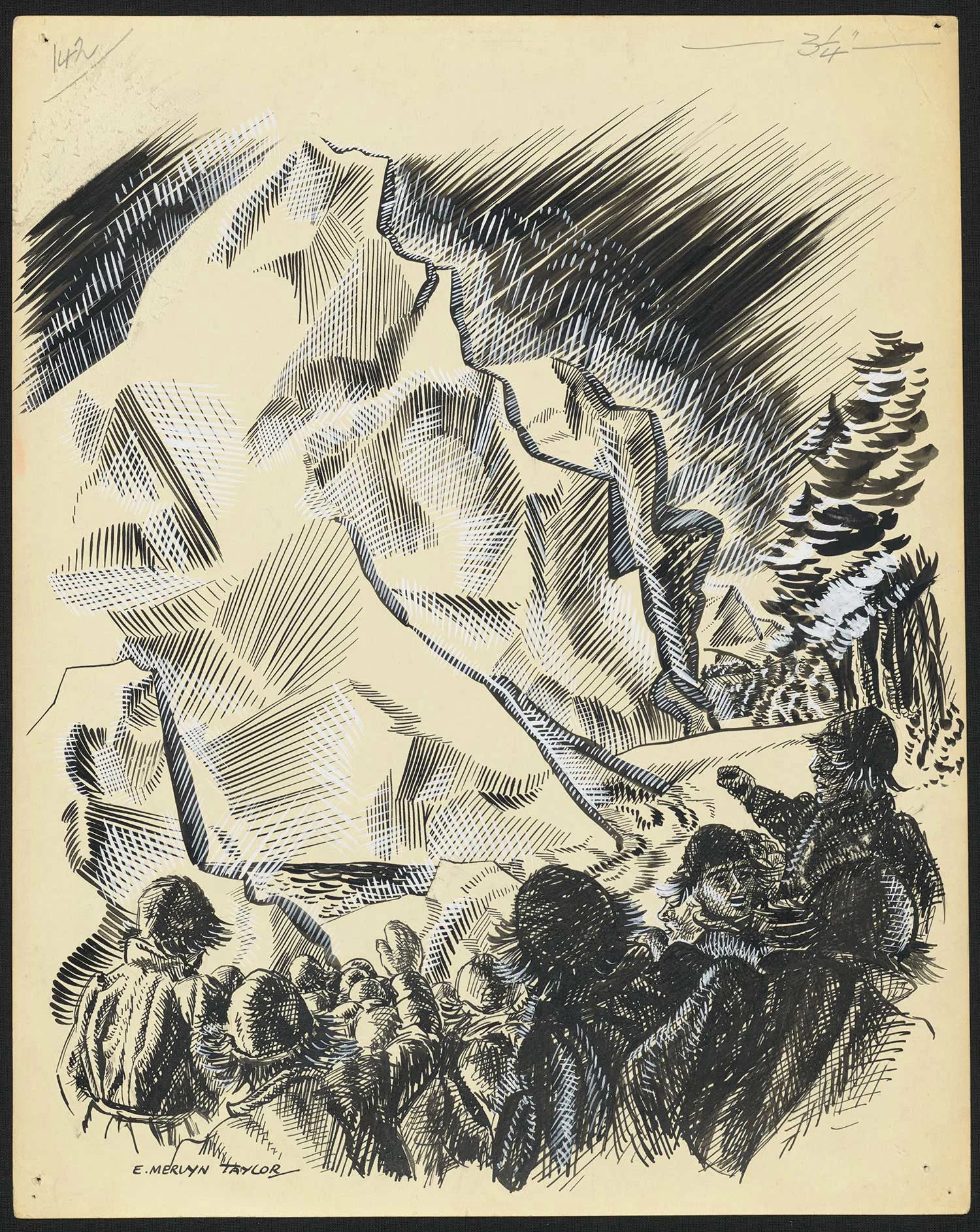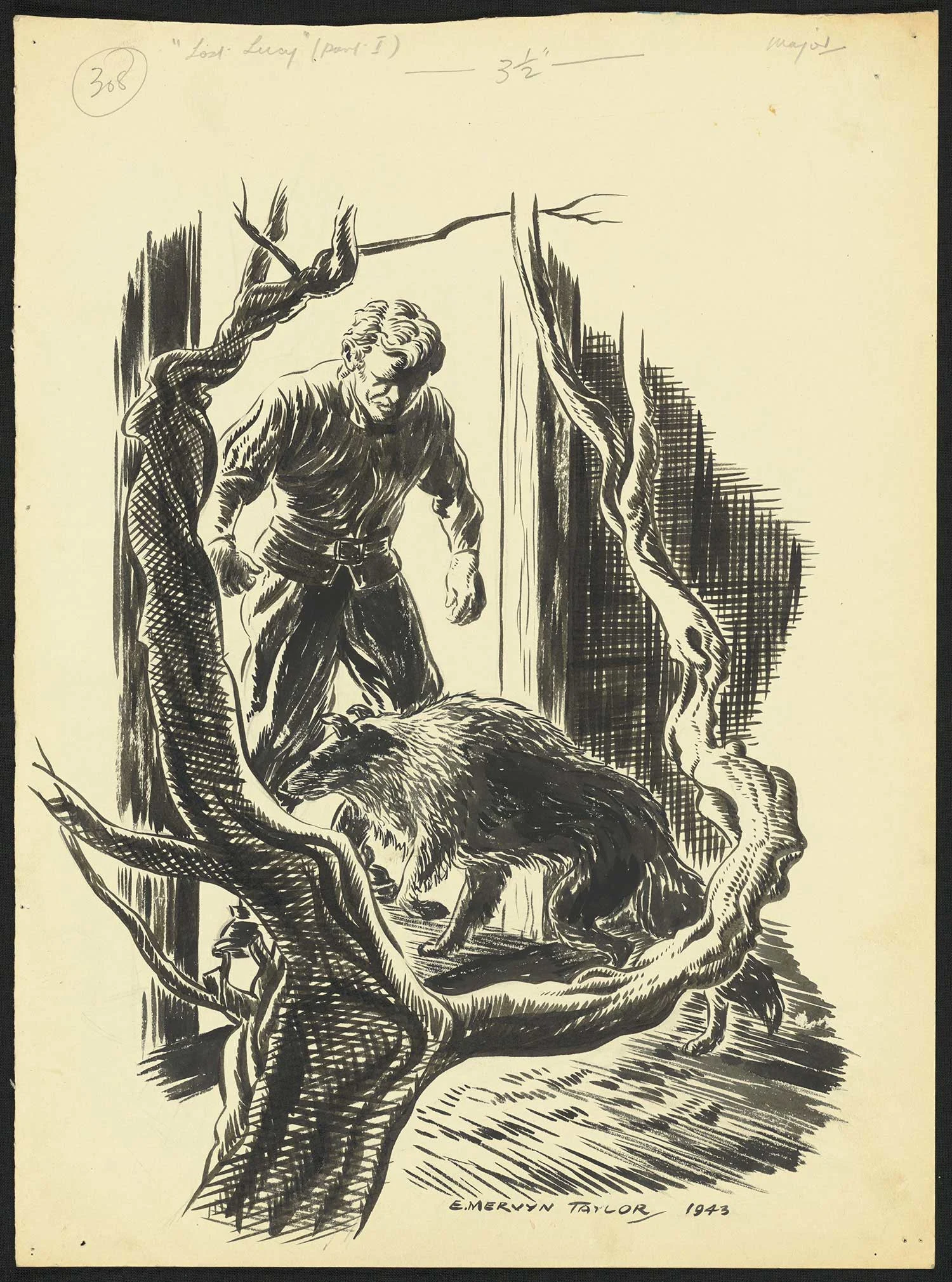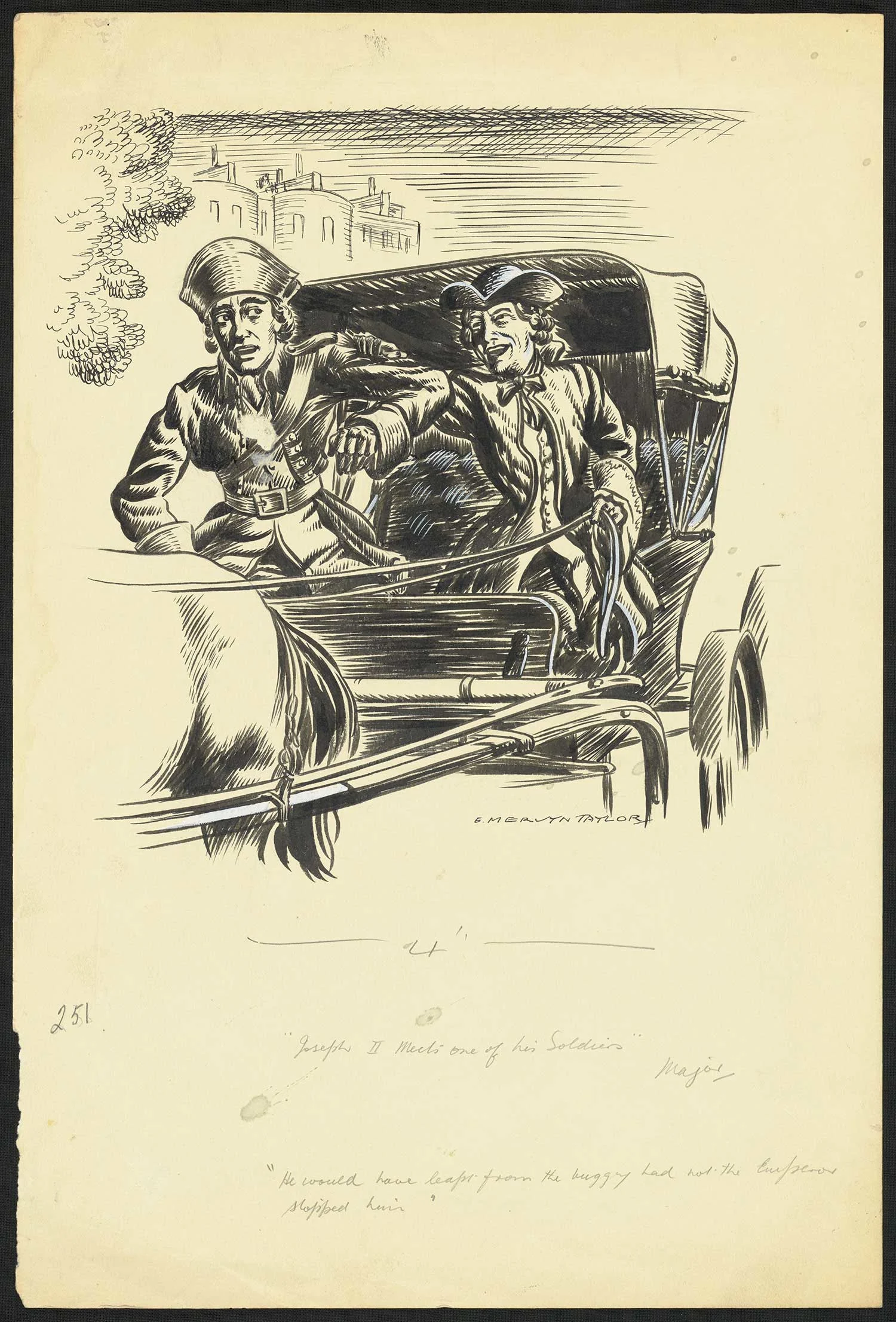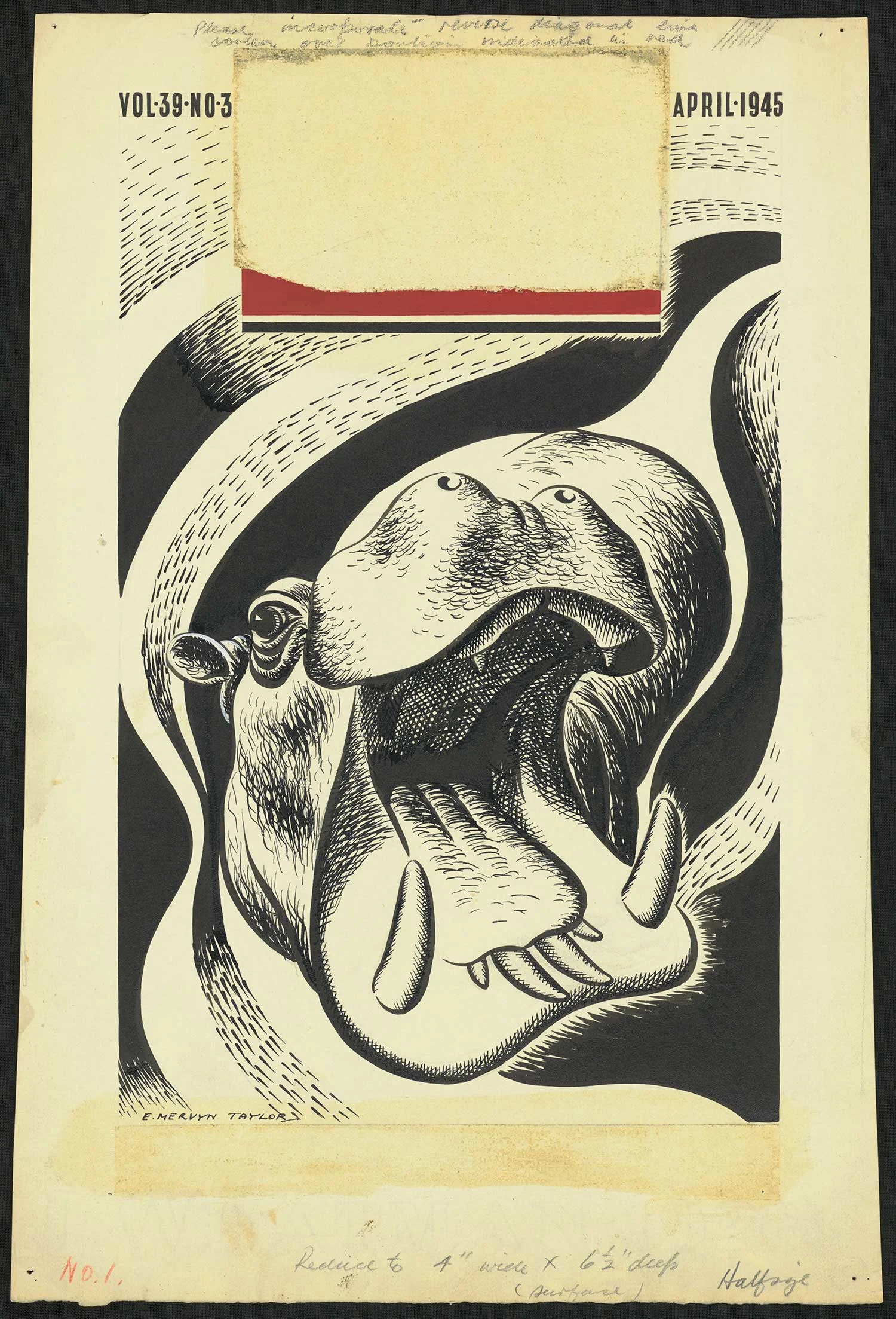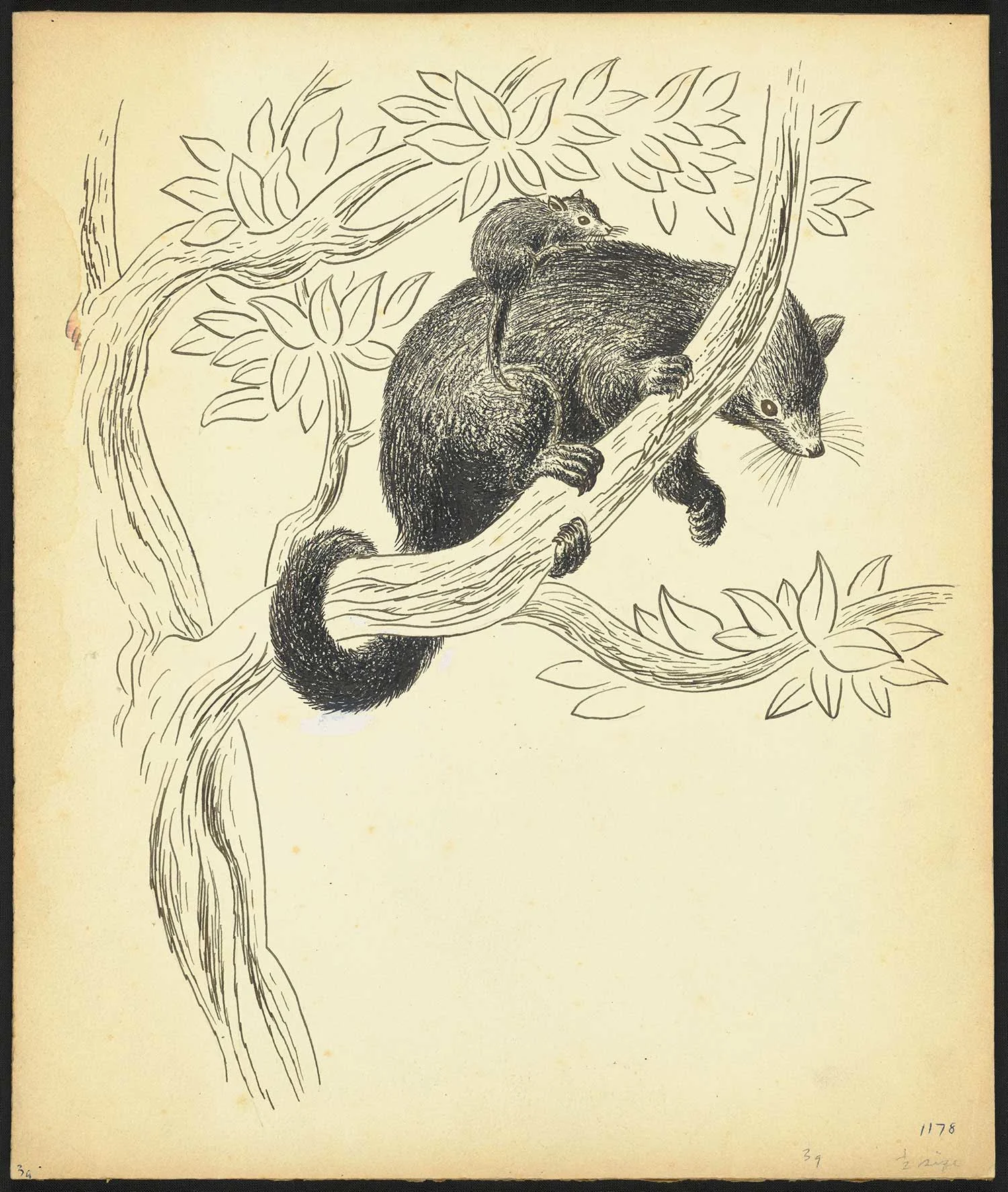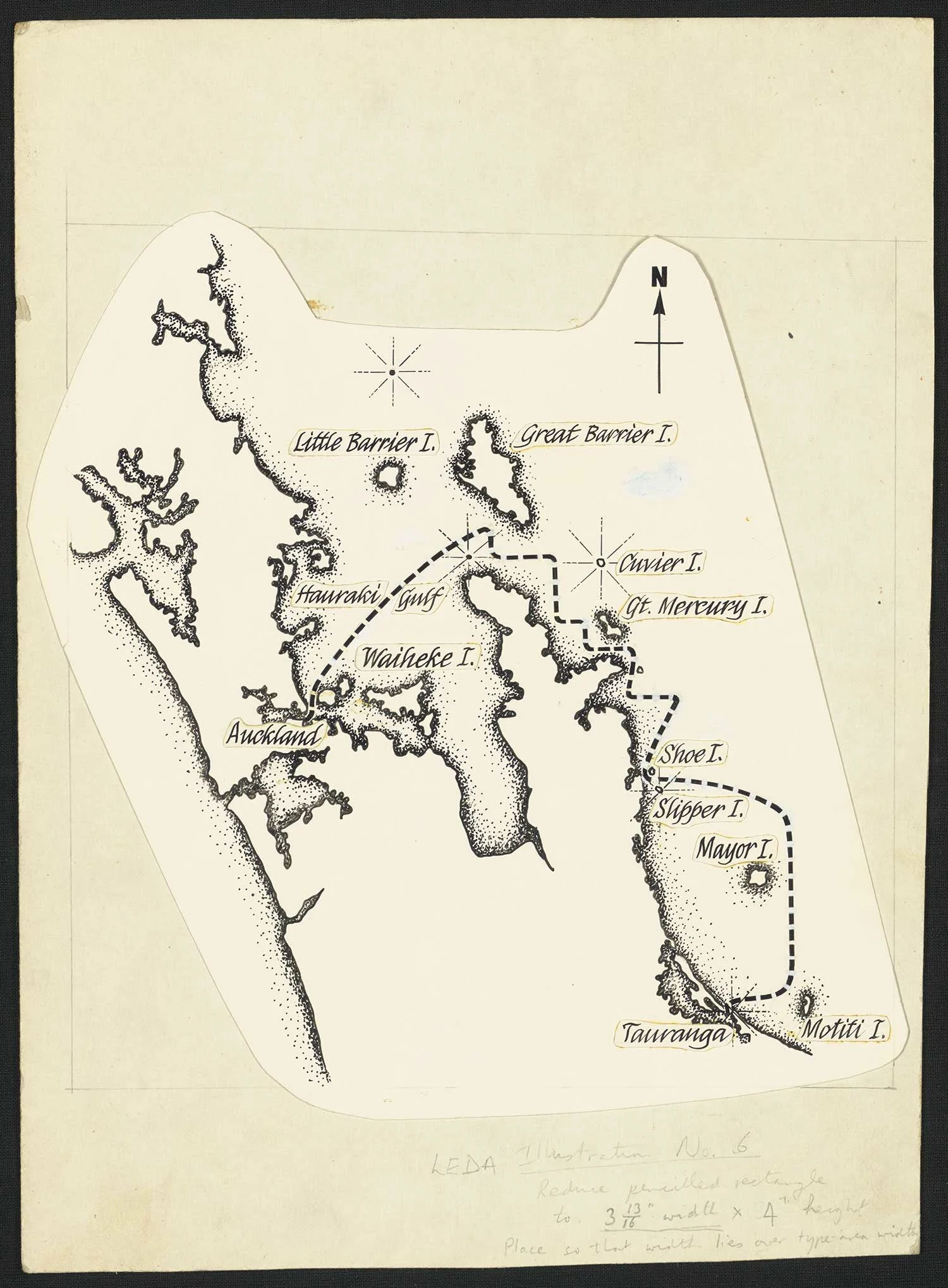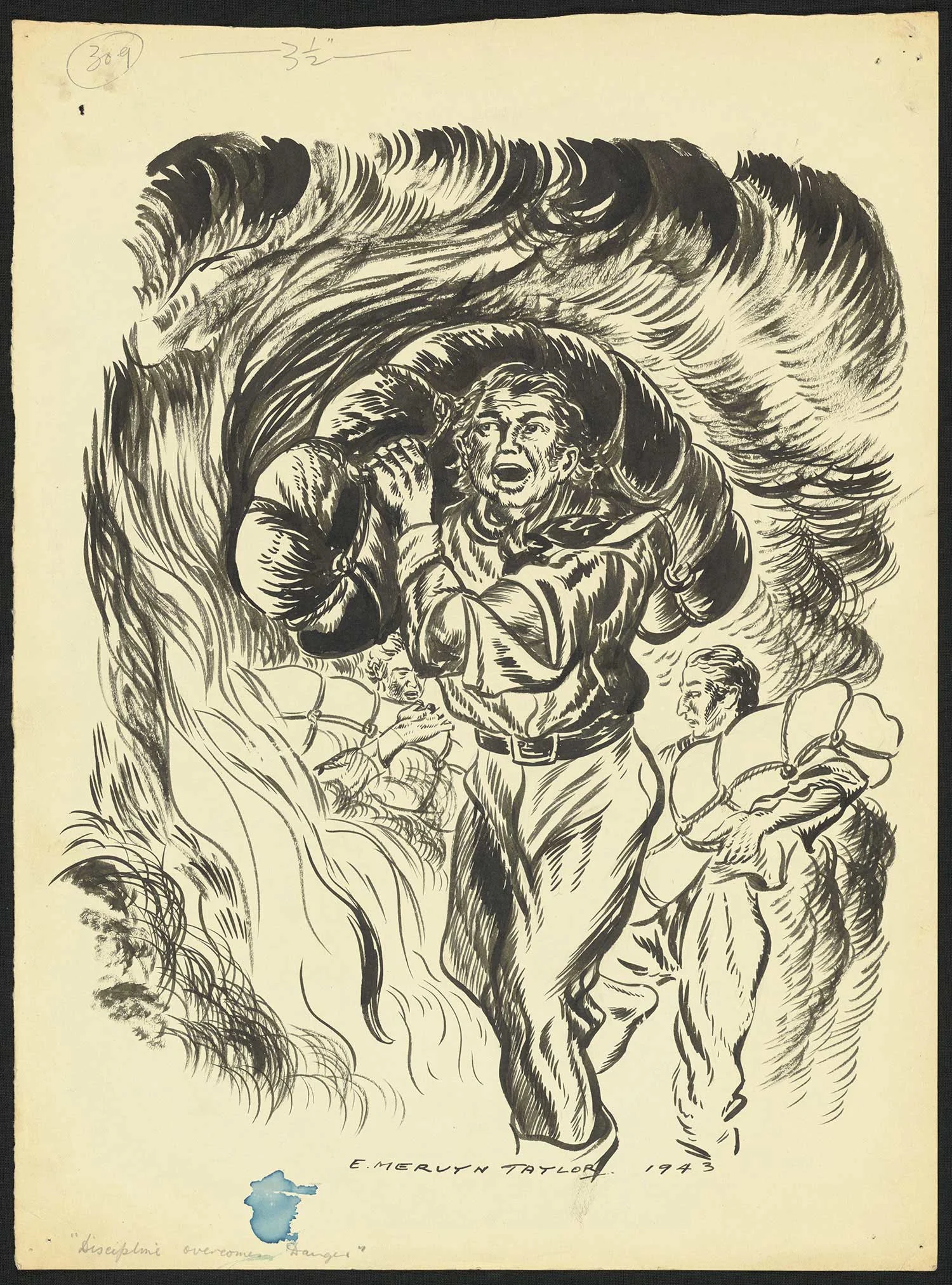E. Mervyn Taylor
E. Mervyn Taylor was a renowned New Zealand painter, illustrator and wood engraver. He championed printmaking and believed strongly in making art more accessible for everyone. Working mainly in woodblock, many of his engravings were used for illustrations in the ‘School Journal’.
E. Mervyn Taylor (1906 to 1964) was born in Auckland. After one year at Auckland Grammar School, he left to become an apprentice jewellery engraver with WH Worral jewellery manufacturers. Over this early period in his life, he grew an appreciation for craft and design and began to develop his printmaking skills. He went on to gain experience in window display, advertising and freelance design, and also contributed to the war effort, drafting maps and working in the Army Education and Welfare services.
Taylor was an illustrator for the ‘School Journal’ from 1940 and art editor from 1944 to 1946. Following WWII, he was a part of the Journal’s change to focus on local stories, illustrated by local artists. This echoed a larger trend, as New Zealanders sought to define themselves more geographically, within Te Moana Nui a Kiwa (the Pacific). As editor, Taylor developed his wood engravings further — a medium he continued with over his career, making over 200 images on wood blocks.
Having become a renowned painter, illustrator, and wood engraver, Taylor also created several large wall murals across the country. In particular he championed printmaking and believed strongly in making art more accessible for everyone. Exhibiting regularly throughout Aotearoa New Zealand and overseas, he received international recognition as a member of the Society of Illustrators in New York (1950) and was a Fellow for the International Institute of Arts and Letters in Lindau, East Germany (1953).
The illustrations featured here were made for a series of Journals in the early to mid 1940s. Reflecting Taylor’s interests, they blend classic and romantic designs with New Zealand themes and subject matter, as well as Māori oral history traditions. This was an enduring feature of both the ‘School Journal’ and his own practice.
